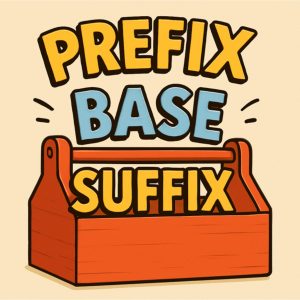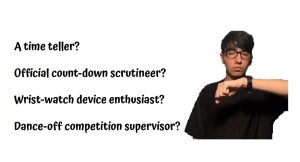11 Vocabulary/Morphology – Suffixes
Category: Vocabulary
Concept: Suffixes
Connections to The Ontario Curriculum, Grades 1-8: Language (2023):
_____B2 Language Foundations for Reading and Writing
_________B2.1 Word-Level Reading and Spelling: Using Morphological Knowledge
_________B2.2 Vocabulary
Prior Knowledge:
- Understanding the concepts of base words and prefixes
- Familiarity with adding endings: changing y to i; dropping the final e; doubling final consonants of base words when adding affixes
- Understanding basic parts of speech such as nouns, verbs, adjectives, adverbs
What’s the definition?
Suffix: A morpheme that is added to the end of a base to create a different word (derived form)
Related definitions:
- Morphology: The study of word structures and the patterns (e.g., prefixes, roots, and suffixes) of how words are formed, and how words are related to each other in the same language.
- Affixes: A morpheme attached to the beginning or end of a base to modify its meaning. Affixes are bound morphemes; they cannot stand alone. Prefixes and suffixes are both affixes.
What does it look/sound like?
The study of suffixes is part of a continuum of word building that includes base words, prefixes, compound words, forming plurals, and changing tenses.
Suffixes are abundant in English words and usually change the meaning and/or part of speech of the base word. The categorization below is based on grammatical function, but there are many other ways of clustering suffixes.

Why does it matter?
When students understand the function of suffixes, they can more easily write, read, and use in their oral language increasingly complex words. This knowledge is vital as they encounter words in various subject areas and seek to communicate across many platforms. Students rely less on memorization when they build an understanding of how words work – the basis of morphological knowledge.
How do I teach this?
Suffixes are one aspect of morphology, in combination with base words, prefixes, and affixes related to plurals, tenses markers, contractions, possessives, and so forth. Rather than overwhelming students with the terminology above, teachers can tailor their instruction to the needs of the class at a given time. As students encounter longer words throughout the day, teachers can introduce new concepts or create short mini lessons in which students are given direct instruction.
Many of the suggested activities in the chapter on prefixes can be extended to include suffixes. These may include colour-coding the base words, prefixes, and suffixes; manipulating word parts or morphemes on interactive white boards or software such as Padlet; creating word webs with the base in the centre and related forms in spokes around the base.
Have students examine what happens to the spelling and/or pronunciation of the base word when a suffix is added.
- It may stay the same: excite/ excitement
- The final e may be dropped: excite/ exciting
- The final y may change to i: happy/ happiness
- The final consonant may be doubled: swim/ swimmer
Rules for some of these patterns can be found in other chapters of this handbook.
A group of suffixes often describe occupations or what an individual does. Clustering words by spelling category may help students recall them correctly.
Challenge students to add to each of the lists of occupations above.
Create job titles for occupations they would like to have (e.g. professional ice cream tester) or that might soon exist (e.g. flying car pilot).

………………………
Online Resources:
World’s Most Advanced Flying Cars (YouTube video)
https://youtu.be/WIYp62vDtf4?si=d68AX67lwjVPz1o1 (14 :13 min)
30 Common Suffixes and Their Meanings: https://downloads.allaboutlearningpress.com/downloads/30-common-suffixes.pdf
A structural element that forms the foundation of a written word; any unit of a word to which affixes can be added. (e.g., act is the base of acted, action, activity, activate, react). Types of bases include:
bound base. A base that requires an affix to form a word (e.g., -ject in inject and project).
free base. A base that forms a word on its own (e.g., eat, date, weak).
A morpheme that precedes a base to form a different word (e.g., trans- before form or act). See also affix, suffix.
A morpheme attached to the beginning or end of a base to modify its meaning. Affixes are bound morphemes; they cannot stand alone. Prefixes and suffixes are both affixes. See also prefix, suffix.
A word that refers to people, places, things, and ideas.
A word that expresses an action, occurrence, or state of being.
A word that describes a noun or pronoun.
A word that describes a verb, an adjective, or another adverb.
The smallest unit of meaning within words. A morpheme can be either a prefix, a suffix, or a base. Words are made up of one or more morphemes.
A derived form, or derivation, is the new word that is created from a base or a base word.
Example:
From the base -ject, we can create derivations, including inject, reject, dejection, etc.
A morpheme that is added to the end of a base to create a different word. See also affix, prefix.

